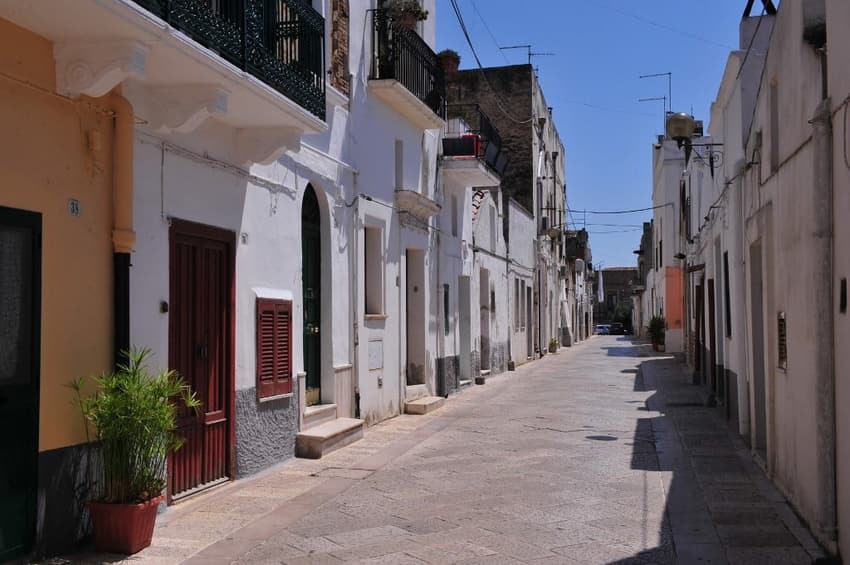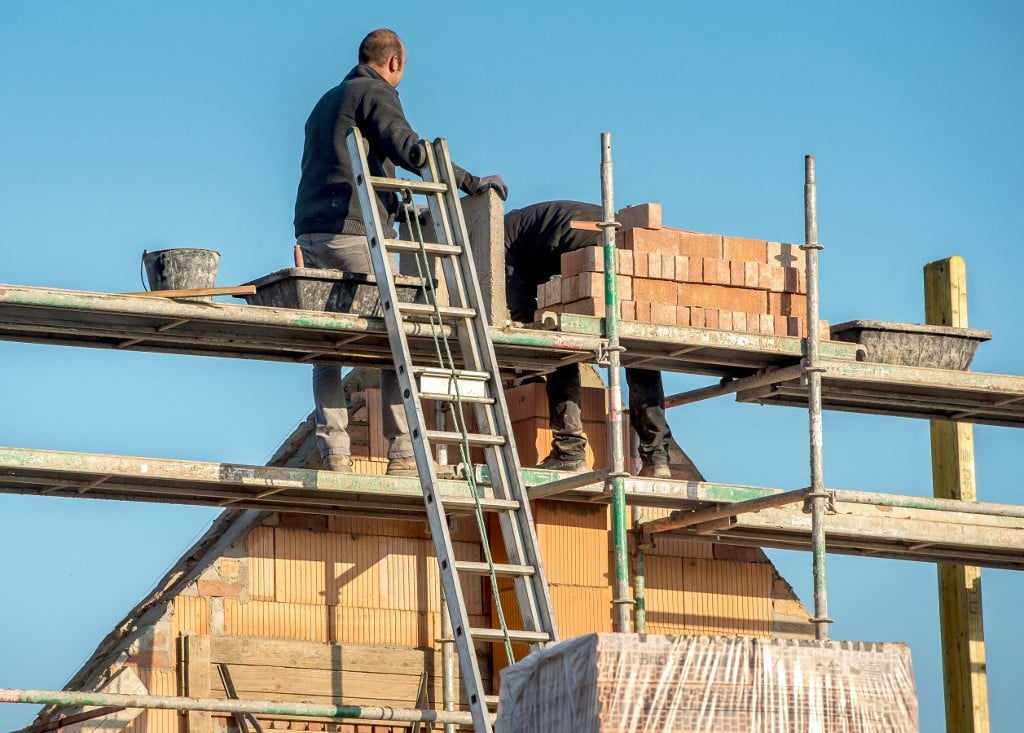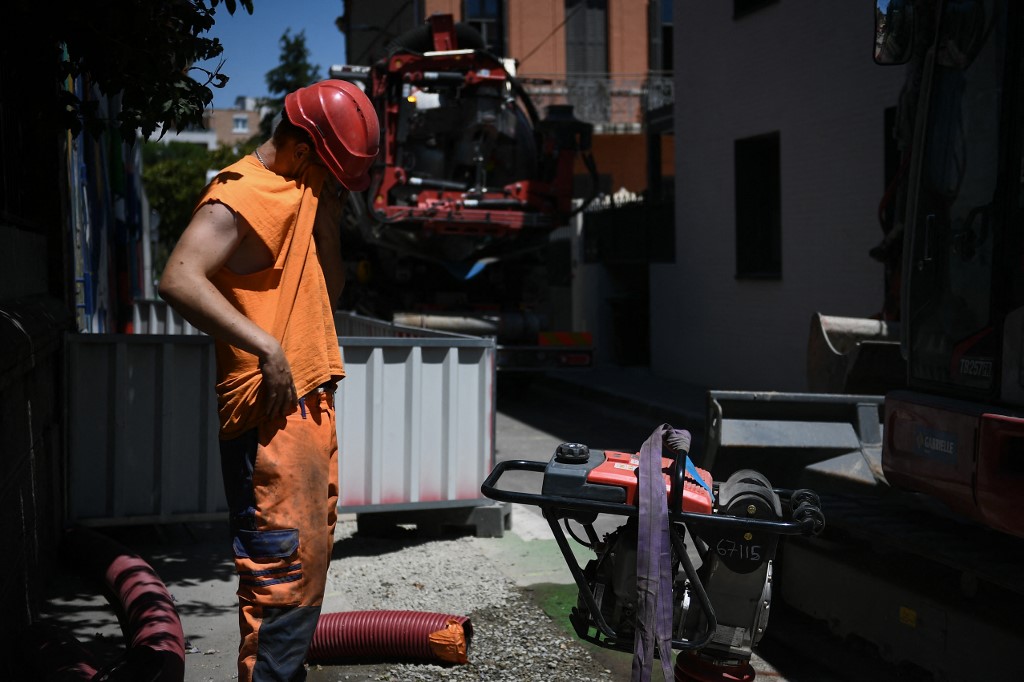Should you hire a renovation agency for your Italian home?

If you're renovating a home in Italy, will you need to pay a middleman to cut through the red tape and language barriers? Silvia Marchetti looks at the pros and cons.
The idea of snapping up a cheap, crumbling house in a picturesque Italian village may sound appealing - but doing so always comes with tedious paperwork and the hassle of renovation.
For this reason, a growing number of professional agencies have sprung up in Italy to cater to foreign buyers snapping up cheap homes amid the property frenzy.
In many of the Italian towns selling one-euro or cheap homes, there are now ‘restyle experts’ and agencies that offer renovation services handling everything that could become a nightmare: from dealing with the paperwork and fiscal issues to finding a notary for the deed, contracting an architect, surveyor, a building team and the right suppliers for the furniture.
They also handle the sometimes tricky task of reactivating utilities in properties that have been abandoned for decades.
I’ve travelled to many of these villages and looked at this side of the business, too. Hiring these ‘middle people’ comes with pros and cons, though the positive aspects can certainly outweigh the negatives - provided you’re careful to pick the right professionals.
READ ALSO: MAP: Where in Italy can you buy homes for one euro?
These intermediaries are usually locals who have expertise in real estate and a good list of suppliers’ contacts. This allows them to deliver turnkey homes that were once just heaps of decaying rubble, sparing buyers time and money - particularly those living abroad, who then aren’t forced to fly over to Italy countless times a year to follow the work in progress.
I’ve met several buyers from abroad who purchased cheap homes sight unseen after merely looking at photos posted online by local authorities, but then had to book many expensive long-haul flights to hire the architect, get the paperwork done, and select the construction team.
Thanks to their contacts the local agents can ensure fast-track renovations are completed within 2-4 months.

Workers stand on scaffolding as they work on the gable of a house under construction. Photo by Philippe HUGUEN / AFP
Their all-inclusive commission usually starts at 5 percent of the total cost of a renovation, or at 2.500 euros per house regardless of its cost and dimension. The fee also depends on the type of work being carried out, how tailored it is and whether there are any specific requirements, like installing an indoor elevator or having furniture pieces shipped from the mainland if it happens to be a Sicilian or Sardinian village.
However, buyers must always be careful. It is highly recommended to make sure the local authorities know who these agents are and how reliable they are in delivering results.
Town halls can often suggest which local companies to contact, and this gives the renovation legitimacy in my view. In a small village, where everyone knows each other, when the town hall recommends an agency there’s always a certain degree of trust involved and agents know that their credibility is at stake (and also future clients).
Word of mouth among foreign buyers is a powerful tool; it can be positive or detrimental for the agency if a restyle isn’t done the right way, or with too many problems.
READ ALSO: How to avoid hidden traps when buying an old property in Italy
So it’s best to avoid agencies from another village, even if nearby, who come to you offering fast and super-cheap services, or local agencies that are not suggested by the mayor’s office.
Then of course there can be other downsides, which largely depend on how ‘controlling’ and demanding the client is.
For those not based in Italy full-time, the most important consideration is: how much can you trust these professionals to deliver what you expect, exactly how you want it, without having to be constantly on the ground?

A construction worker wipes sweat off his face during a break. Photo by Valentine CHAPUIS / AFP
Language can be a major obstacle. There are technical building terms that prove difficult to translate, and if the local agency doesn’t have English-speaking renovation professionals with a track record in following foreign clients it’s best to look for an intermediary with a greater language proficiency.
READ ALSO: The Italian vocabulary you'll need when renovating property
I remember meeting an American couple once who got lost in translation with a village agent for days, and had to hire a translator just to hire the intermediary.
It’s always useful to ask for a ‘preventivo’ (quote) with VAT indication, considering roughly how much inflation could make the final cost go up. Buyers should also sign a contract with the exact timeframe of the works and delivery date of the new home, including penalties if there are delays on the part of the agency.
But, even when there is complete trust, I think it is impossible to fully restyle an old home from a distance, contacting intermediaries by phone, emails, messages or video calls only.
Details are key and there’s always something that could be misinterpreted. Buyers based overseas should still follow-up the renovation phases personally, perhaps with one or two flights per year to check all is going well and up to schedule.
Asking to see the costs so far undertaken midway through the restyle is useful to make sure there are no hidden costs or unexpected third parties involved - like buying the most expensive furniture or marble floor when not requested, or hiring a carpenter to build artisan beds.
While there is really no such thing as a hassle-free renovation, these agencies can ease the pressure and do most of the burdensome work - but buyers’ supervision will always be needed.
Read more in The Local's Italian property section.
Comments
See Also
The idea of snapping up a cheap, crumbling house in a picturesque Italian village may sound appealing - but doing so always comes with tedious paperwork and the hassle of renovation.
For this reason, a growing number of professional agencies have sprung up in Italy to cater to foreign buyers snapping up cheap homes amid the property frenzy.
In many of the Italian towns selling one-euro or cheap homes, there are now ‘restyle experts’ and agencies that offer renovation services handling everything that could become a nightmare: from dealing with the paperwork and fiscal issues to finding a notary for the deed, contracting an architect, surveyor, a building team and the right suppliers for the furniture.
They also handle the sometimes tricky task of reactivating utilities in properties that have been abandoned for decades.
I’ve travelled to many of these villages and looked at this side of the business, too. Hiring these ‘middle people’ comes with pros and cons, though the positive aspects can certainly outweigh the negatives - provided you’re careful to pick the right professionals.
READ ALSO: MAP: Where in Italy can you buy homes for one euro?
These intermediaries are usually locals who have expertise in real estate and a good list of suppliers’ contacts. This allows them to deliver turnkey homes that were once just heaps of decaying rubble, sparing buyers time and money - particularly those living abroad, who then aren’t forced to fly over to Italy countless times a year to follow the work in progress.
I’ve met several buyers from abroad who purchased cheap homes sight unseen after merely looking at photos posted online by local authorities, but then had to book many expensive long-haul flights to hire the architect, get the paperwork done, and select the construction team.
Thanks to their contacts the local agents can ensure fast-track renovations are completed within 2-4 months.

Their all-inclusive commission usually starts at 5 percent of the total cost of a renovation, or at 2.500 euros per house regardless of its cost and dimension. The fee also depends on the type of work being carried out, how tailored it is and whether there are any specific requirements, like installing an indoor elevator or having furniture pieces shipped from the mainland if it happens to be a Sicilian or Sardinian village.
However, buyers must always be careful. It is highly recommended to make sure the local authorities know who these agents are and how reliable they are in delivering results.
Town halls can often suggest which local companies to contact, and this gives the renovation legitimacy in my view. In a small village, where everyone knows each other, when the town hall recommends an agency there’s always a certain degree of trust involved and agents know that their credibility is at stake (and also future clients).
Word of mouth among foreign buyers is a powerful tool; it can be positive or detrimental for the agency if a restyle isn’t done the right way, or with too many problems.
READ ALSO: How to avoid hidden traps when buying an old property in Italy
So it’s best to avoid agencies from another village, even if nearby, who come to you offering fast and super-cheap services, or local agencies that are not suggested by the mayor’s office.
Then of course there can be other downsides, which largely depend on how ‘controlling’ and demanding the client is.
For those not based in Italy full-time, the most important consideration is: how much can you trust these professionals to deliver what you expect, exactly how you want it, without having to be constantly on the ground?

Language can be a major obstacle. There are technical building terms that prove difficult to translate, and if the local agency doesn’t have English-speaking renovation professionals with a track record in following foreign clients it’s best to look for an intermediary with a greater language proficiency.
READ ALSO: The Italian vocabulary you'll need when renovating property
I remember meeting an American couple once who got lost in translation with a village agent for days, and had to hire a translator just to hire the intermediary.
It’s always useful to ask for a ‘preventivo’ (quote) with VAT indication, considering roughly how much inflation could make the final cost go up. Buyers should also sign a contract with the exact timeframe of the works and delivery date of the new home, including penalties if there are delays on the part of the agency.
But, even when there is complete trust, I think it is impossible to fully restyle an old home from a distance, contacting intermediaries by phone, emails, messages or video calls only.
Details are key and there’s always something that could be misinterpreted. Buyers based overseas should still follow-up the renovation phases personally, perhaps with one or two flights per year to check all is going well and up to schedule.
Asking to see the costs so far undertaken midway through the restyle is useful to make sure there are no hidden costs or unexpected third parties involved - like buying the most expensive furniture or marble floor when not requested, or hiring a carpenter to build artisan beds.
While there is really no such thing as a hassle-free renovation, these agencies can ease the pressure and do most of the burdensome work - but buyers’ supervision will always be needed.
Read more in The Local's Italian property section.
Join the conversation in our comments section below. Share your own views and experience and if you have a question or suggestion for our journalists then email us at [email protected].
Please keep comments civil, constructive and on topic – and make sure to read our terms of use before getting involved.
Please log in here to leave a comment.